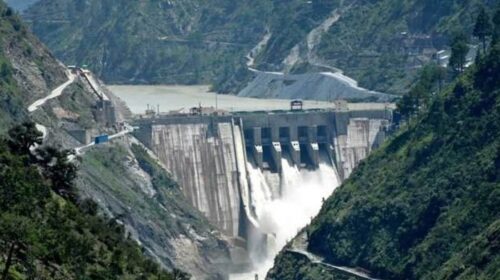India is fast moving towards achieving the capacity to manipulate the water flows of Pakistani rivers as in a new development, it has finished not only the civil works but also almost completed the diversion tunnel for the Kiru hydropower project of 624MW the new one being erected on the Chenab River, but the sorry state of affairs is that the Pakistan Commission of Indus Water (PCIW) has not yet visited the site, top relevant officials told The News.
Surprisingly, Pakistan and India are going to hold talks at the Permanent Commission of Indus Waters in March, but the Kiru project is on the agenda. India has built so many hydropower projects on the Pakistani rivers and many are in the pipeline, which will enable it to manipulate the water inflows which are destined to reach Punjab.
The Punjab province is the food basket of our country and India in future will have the capacity to manipulate the flows at a time when the sowing season of any crops starts.” The excavation, they said, for the power house and transformer hall has been completed by India. And the construction of all approach roads from the dam site has been completed. “And diversion tunnel works, excavation of main access tunnel and audit to pressure shaft top & bottom is in progress and the dam abutment stripping is also in progress. However, the project is scheduled to be completed by 2023.”
“The project will have a dam with a height of 136 meters and a width of over 190 meters. Indian engineers have almost completed the construction of the first diversion tunnel having a length of over 650 meters with diameters of almost 9 meters. More importantly, the over and invert concreting of the tunnel is almost near completion.” Under the SOPs, they said, between the two countries, it is essential to visit the site of the project before the construction work but in the case of the Kiru project, India has made substantial progress keeping the Pakistan side in the dark.
When contacted, a spokesman of the Ministry of Water Resources confirmed that the Pakistan Commission of Indus Water (PCIW) has not yet visited the site of the Kiru project. However, he said that India in June 2020 shared the design data and Pakistan raised some objections to the design.
However, Arshad H Abbasi, eminent expert on Pak-India water issues associated with the SDPI, said he congratulates The News for unearthing such a factual story. “Although this is a job of our elite organizations, dealing with water security, now when the whole governance system is in collapse, only few vigilant people like KM are still doing the national duty. It appears to me, now after initiation of Inland Water Transport in three Western rivers, nobody from Pakistan showed any concerns.
It means now we sold our rivers, water security, energy and food security too.” Abbasi said the Pakistan Commission of Indus Water is being run on an ad hoc basis as there has been no regular commissioner since long. The joint secretary Water, already burdened with the ministry affairs, is also working as acting commissioner. The Pakistan Commission of India Water also needs to be updated and digitalized and develop its vigilance system to keep an eye on Indian activities on the Pakistani rivers.
The project is being developed over the Chenab River in the Kishtwar Tehsil of the Doha district in Jammu and Kashmir, India. It will be completed by the Chenab Valley Power Projects (CVPP), a joint venture among National Hydroelectric Power Corporation (NHPC, 49%), Jammu & Kashmir State Power Development Corporation (JKSPDC, 49%) and Power Trading Corporation (PTC, 2%). The Kiru hydroelectric power project is being built near the villages of Patharnakki and Kiru in Kishtwar, J&K. The exact location of the project site lies approximately 1.5km downstream and 0.5km upstream at the convergence point of the Chenab River with the Singad and Bela streams. And the project’s location is between Kirthai II (upstream) and Kwar (downstream) hydroelectric plants on the Chenab River.






